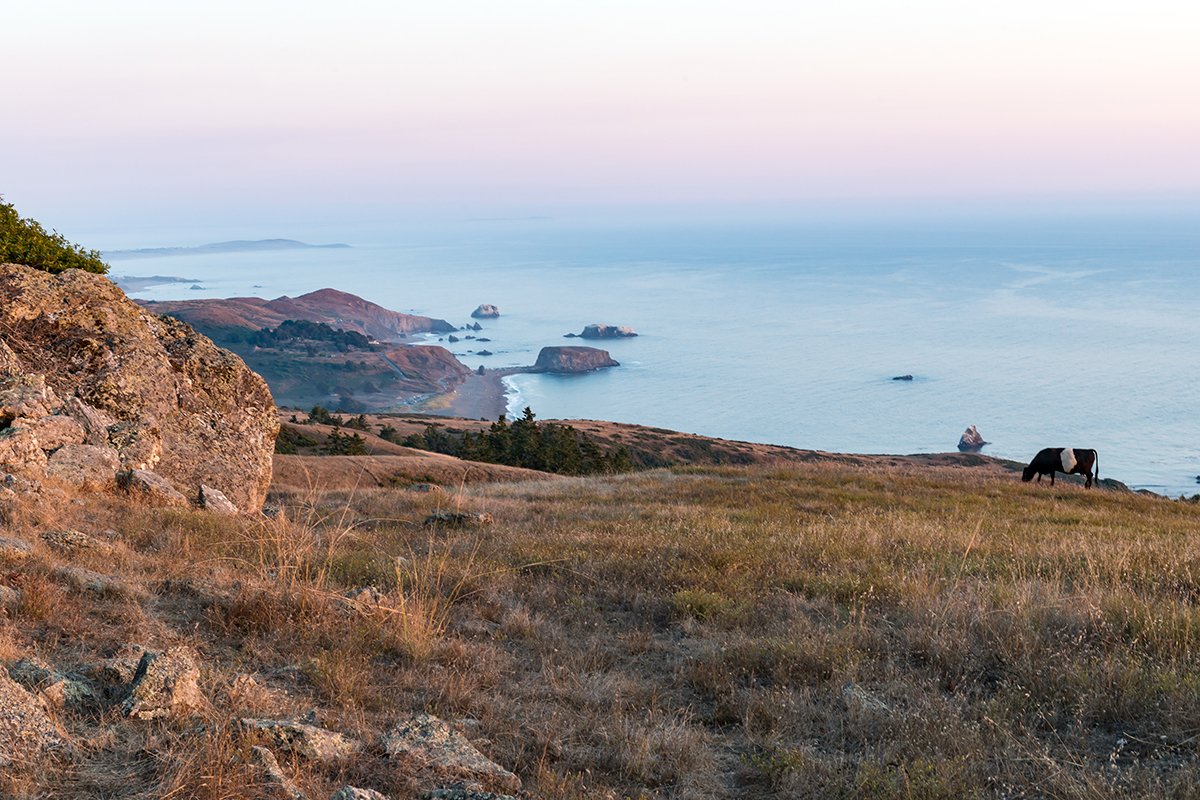Restoring California’s Native Coastal Prairie Grasslands at Jenner Headlands Preserve
Jenner Headlands Preserve / photo by Jeremy Long
Why Are California’s Coastal Prairies So Important?
California’s coastal prairies are among the most biodiverse grasslands in North America. These unique ecosystems, found in places like Jenner Headlands Preserve, offer a range of environmental benefits, making them essential to the health of the region. Some key contributions include:
Habitat: Coastal prairies are home to a variety of species, including pollinators, grassland birds, and wetland-dependent animals. They also serve as a crucial alternative habitat for wildlife when other coastal ecosystems face disruptions.
Erosion Control: The deep root systems of coastal prairie grasses help stabilize the soil, preventing erosion and reducing pollutants from entering nearby streams and aquatic ecosystems.
Water Quality: These grasslands absorb excess nitrogen and phosphorus, which improves both surface and groundwater quality.
Carbon Storage: Through photosynthesis, coastal prairies sequester carbon dioxide in their roots and soil, contributing to climate change mitigation.
Sadly, since the onset of Euro-American settlement, more than 90% of California’s coastal prairies have been lost due to factors like urbanization, agriculture, non-native plant invasion, fire suppression, and shrub encroachment. Recognizing their value, the California Coastal Commission has designated coastal prairies as an Environmentally Sensitive Habitat Area (ESHA), affording them protection under the California Coastal Act.
Jenner Headlands Preserve Coastal Prairie Management Goals
At Wildlands, we approach land management with a commitment to environmental stewardship, upholding a "do no harm" philosophy. Protecting air and water quality, soil health, and wildlife habitat remains our highest priority in restoring the coastal prairie.
In partnership with Sonoma Land Trust, and with the guidance of our Coastal Prairie Technical Advisory Committee (TAC), an Integrated Resource Management Plan for Jenner Headlands Preserve was developed when the land was acquired for conservation. This plan outlines key ecological goals to guide the management of coastal prairie habitat, including:
Nurturing a high level of native biological diversity
Promoting healthy coastal prairie habitat structure
Supporting the overall function of the ecosystem
One of the most significant challenges to restoring the coastal prairie is the presence of invasive grass species. If left unmanaged, these grasses form dense thatch, choking out native plants and limiting the movement of small wildlife such as reptiles, small mammals, and ground-nesting birds. This poses a major obstacle to achieving our restoration goals.
The coastal prairie ecosystem evolved with both natural and cultural burning, along with large herds of native grazers. Prescribed fire remains one of the most effective methods to meet both our environmental stewardship principles and the ecological goals of Jenner Headlands Preserve. However, due to current limitations, we are unable to reintroduce fire at the scale required for coastal prairie management at this time.
In its place, Wildlands and our technical advisors have identified conservation grazing — also known as rotational grazing or regenerative agriculture — as the best available method for managing the hundreds of acres of coastal prairie at Jenner Headlands. This targeted approach helps mitigate the impact of non-native grasses, supporting our ongoing commitment to restore and protect this unique and vital ecosystem.
Conservation Grazing as a Tool to Reach Our Ecological Goals for the Coastal Prairie
We recognize in instances — especially in the recent wet years at Jenner Headlands Preserve — that there are some negative impacts from conservation grazing and we are continuing to work to minimize those impacts. However, rotational grazing, as a tool, remains our best option to manage the coastal prairie for positive ecological outcomes.
The rotational system utilized with conservation grazing distributes grazing pressure across the landscape, allowing recently grazed grasslands to recover, protecting soils, and facilitating uptake and utilization of soil nutrients. The result with contained management will be a mosaic of native plant diversity and vegetation structure that supports wildlife activity. At Jenner Headlands Preserve, restoration of some 800 acres of coastal prairie is underway using these methods as we work toward achieving our ecological goals.
Wildlands partners with grazing lessee Doniga Markegard, a Sonoma Coast rancher and naturalist who focuses on regenerative land practices which support the conservation goals at Jenner Headlands Preserve.
Preserving Coastal Prairie Grasslands for Future Generations
Together with our partners, Wildlands is dedicated to protecting and restoring the rich biodiversity of Jenner Headlands Preserve’s coastal prairies by removing dense layers of non-native thatch and providing room and resources for native plants and wildlife to thrive. Our collective restoration efforts enhance the beauty of the landscape and foster a deeper appreciation for the natural biodiversity of the region.





